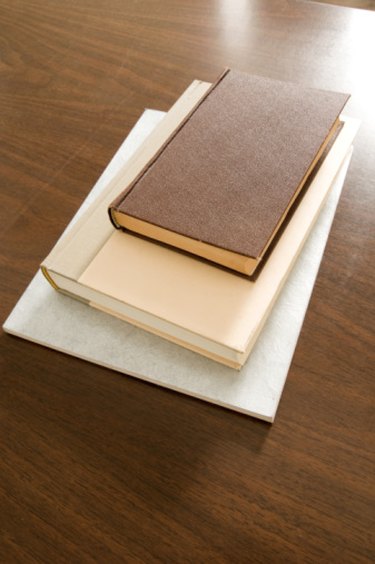Things You'll Need
320 or 400 grit sandpaper
Tack cloth
Polyurethane
Paintbrush

Polyurethane is a type of varnish with a resin that adds heat-, scratch-, water- and solvent resistance to the wood on which it's applied. To create a good resistant finish, multiple coats of the polyurethane may be required on the wood surface. Between each coat the polyurethane must be sanded with a light-grit sandpaper. The sanding between coats accomplishes two things: It removes defects from the applied urethane as well as small dust particles lodge in the dry finish.
Step 1
Allow the first polyurethane coat to dry. Depending on temperature and humidity, it may take up to 24 hours for the urethane to thoroughly dry before the first sanding.
Video of the Day
Step 2
Fold the sandpaper over several times so it fits in your hand. Work the urethane finish with the grit side of the sandpaper lightly in one direction. Typically the sandpaper should be run over the surface in the same direction as the wood grain. Sand the finish once to remove any built up dust ridges on the finish.
Step 3
Clean the surface with the tack cloth. Apply the second coat of urethane. Allow the product to dry as before according to label directions and environmental conditions.
Step 4
Sand the urethane surface a second time in preparation for a third coat. Follow Steps 2 and 3 between each polyurethane application.
Tip
To start the project, sand the wood surface with a 320 or 400 grit sandpaper to remove minor surface defects from the wood. Clean the sanded wood surface with a tack cloth before applying the first coat of polyurethane. The tack cloth will remove small particles of wood dust created by the light sanding.
Warning
Polyurethane applied to a wood surface when temperatures are below 50 F may take the product longer to dry. Never sand a tacky surface as the grit of the sandpaper will quickly become clogged with the polyurethane material.
Video of the Day